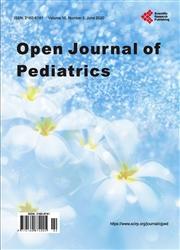Metabolic Emergencies in Newborns in a Subsaharian Neonatology Department: Evaluation of Glucose, Sodium and Potassium Disorders
引用次数: 0
Abstract
Introduction: Metabolic neonatal adaptation is a complex phenomenon and metabolic disorders can be frequent in immature newborns or in life-threat-ening situations. In Low and Middle income countries (LMIC) the difficult access to some diagnostic tests makes the management of the metabolic emergencies challenging. The main objectives of this study were to assess the frequency and circumstances of occurrence and to describe the clinical picture associated with glucose, sodium and potassium disorders in neonates. Patients and Methods: Our study was a retrospective and descriptive study conducted in the neonatology unit of National Children Hospital Albert Royer in Dakar (Senegal) from January 1 to December 31, 2014. Results: The prevalence of the studied metabolic disorders was 46.7%. The most common metabolic disorder noted was Hyperglycemia followed by Hyponatremia. Thermoregulation disturbances were found particularly in newborns with serum sodium disorders (hyponatremia 33.5% and hypernatremia 59.7%). Neurological signs were noted in case of blood sugar abnormalities (hypoglycemia 26.1% and hyperglycemia 29.8%). Half of the newborns with hyperglycemia (82 cases/50%) had blood sugar levels greater than or equal to 2 g/l. Hypernatremia was severe (Serum sodium> 180 mmol/l) in 12 neonates (16.7%). The most lethal disorders were Hyperkalemia followed by Hyperglycemia. Conclusion: Metabolic disorders especially glucose, sodium and potassium disorders are common in newborns. They are medical emergencies that can lead to vital instability and death. Their management is challenging in low-income countries due to the lack of adapted facilities and means to diagnose them. It is therefore important to improve the availability of technical methods and means of biological analysis in hospital laboratories and to monitor closely all newborns for early diagnosis of these disorders.撒哈拉以南地区新生儿的代谢急症:葡萄糖、钠和钾紊乱的评估
新生儿代谢适应是一种复杂的现象,在未成熟的新生儿或生命受到威胁的情况下,代谢紊乱可能是常见的。在低收入和中等收入国家(LMIC),由于难以获得某些诊断测试,使得代谢紧急情况的管理具有挑战性。本研究的主要目的是评估发生的频率和情况,并描述与新生儿血糖、钠和钾紊乱相关的临床情况。患者和方法:我们的研究是一项回顾性和描述性研究,于2014年1月1日至12月31日在达喀尔(塞内加尔)Albert Royer国立儿童医院新生儿科进行。结果:所研究的代谢性疾病患病率为46.7%。最常见的代谢紊乱是高血糖症,其次是低钠血症。体温调节障碍尤其见于血清钠紊乱的新生儿(低钠血症33.5%,高钠血症59.7%)。血糖异常(低血糖26.1%,高血糖29.8%)出现神经学症状。半数高血糖新生儿(82例/50%)血糖水平大于或等于2g /l。重度高钠血症12例(16.7%),血清钠浓度为180 mmol/l。最致命的疾病是高钾血症,其次是高血糖症。结论:新生儿代谢紊乱以糖、钠、钾紊乱最为常见。它们是可能导致严重不稳定和死亡的医疗紧急情况。在低收入国家,由于缺乏适当的诊断设施和手段,对这些疾病的管理具有挑战性。因此,必须改善医院实验室生物分析技术方法和手段的可得性,并密切监测所有新生儿,以便及早诊断这些疾病。
本文章由计算机程序翻译,如有差异,请以英文原文为准。
求助全文
约1分钟内获得全文
求助全文

 求助内容:
求助内容: 应助结果提醒方式:
应助结果提醒方式:


